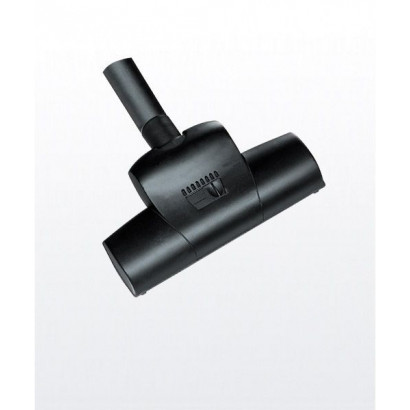Turbo Air-Driven Powerheads for Central Vacuum Cleaners
 The terms turbo air or turbo driven have a similar meaning when it comes to describing a vacuum powerhead. Essentially, a turbo air or turbo driven powerhead uses the vacuum's suction to rotate the beater bar. As the suction drags air through the powerhead, the air spins the bar to release dirt.
The terms turbo air or turbo driven have a similar meaning when it comes to describing a vacuum powerhead. Essentially, a turbo air or turbo driven powerhead uses the vacuum's suction to rotate the beater bar. As the suction drags air through the powerhead, the air spins the bar to release dirt.Selecting the appropriate powerhead for your central vacuum is extremely crucial. You could buy the strongest unit, but without a suitable powerhead to help utilize the suction, your vacuum won't attain its full potential.
If you don't know which powerhead to purchase for your unit, the professionals at Beam Vacuums will advise you accordingly. Here's what you should know about air-driven powerheads for central vacuums.
Air-Driven Powerheads
Air driven or turbo powerheads for central vacuums operate without electricity. The attachments are easy to maneuver and operate. Moreover, they offer a deep clean without involving a motorized brush. Newly developed technology and profile designs permit the turbine nozzles to be quieter and more powerful.
Air-driven powerheads from Beam central vacuums are tough on dirt and easy to use. They have a high-speed turbine fan, which rotates, generating the superior suction required for deep cleaning. Their powerheads are ideal for the way you clean.
Unlike electric powerheads, which are heavier and bulky, Beam air-driven turbo powerheads are more responsive, lighter in weight, and exceptionally maneuverable. The low-profile makes the vacuuming process simple allowing you to push the vacuum around furniture and other difficult to reach areas.
Choosing a Powerhead for Your Central Vacuum
Selecting the appropriate powerhead for your unit might seem daunting. However, if you pay attention to what we offer and recognize what you require, establishing the best powerhead for your unit becomes easier.
Generally, powerheads are incorporated in attachment sets, however; you can purchase them separately. Consider these factors if you're looking to buy a powerhead for your unit.
Carpet Type
An air powerhead can handle low pile carpeting well but is not suitable for an ultra-soft carpet. Actually, it could damage this type of carpet or the internal elements of the powerhead. We recommend you select an electric powerhead for ultra-soft or deep pile carpeting.
Height Adjustment
Your powerhead's ability to alter its height is an excellent feature that makes it easy to shift from carpets of different thickness to hard floors. Some units feature a floating head that can adjust automatically to the height of different floors while others require manual setting.
Either way, if your home has different kinds of flooring throughout, the capacity to adjust the powerhead can come in handy.
Quality of Roller Brush
When it comes to your powerhead's construction, look for quality materials to obtain the best longevity. Some roller brushes have sealed ball bearings and strong steel while others are wooden or aluminum. One handy component is a replaceable brush strip, which can extend your powerhead's life farther because when it wears out, you only need to substitute that part instead of the entire powerhead.
Width
 The appropriate width for your powerhead has a lot to do with your space. A narrower 10-inch model permits you to vacuum between couches and beside beds. However, if you have considerable space, a broader 14-inch enables cleaning in a shorter time.
The appropriate width for your powerhead has a lot to do with your space. A narrower 10-inch model permits you to vacuum between couches and beside beds. However, if you have considerable space, a broader 14-inch enables cleaning in a shorter time.Weight
One advantage of a central vacuum is that you don't need to drag a canister or upright vacuum throughout your home. However, the powerhead needs to move around, so consider its weight before making your final selection. Numerous lightweight models do an excellent job of cleaning, but you should ensure they also have solid construction.
Belt System
Initially, only one kind of vacuum belt existed for every model, and that was flat. These days, flat belts are one of three choices. The newer Cogged and Poly-V belts usually last longer than flat belts. Belts are replaceable, and you should expect to replace them as part of regular central vacuum maintenance
Air Turbine or Electric
The airflow of the central vacuum powers air-driven powerheads. Therefore, the heads will constantly turn as long as the system is on. However, they're very quiet in terms of operation because they lack a separate motor.
On the other hand, electric powerheads comprise separate motors that permit you to turn off the rotating brush for tile or hardwood surfaces. You'll discover they're slightly noisier compared to air-driven powerheads but attain a deeper clean. Furthermore, you can turn them off when the main unit is operating.
Vacuuming makes a big difference in the appearance and cleanliness of any space, so you want to make sure you do it well. One way of doing so is choosing the appropriate powerhead for your unit. Fortunately, this guide reveals how to make the best decision.




Log In
Create New Account